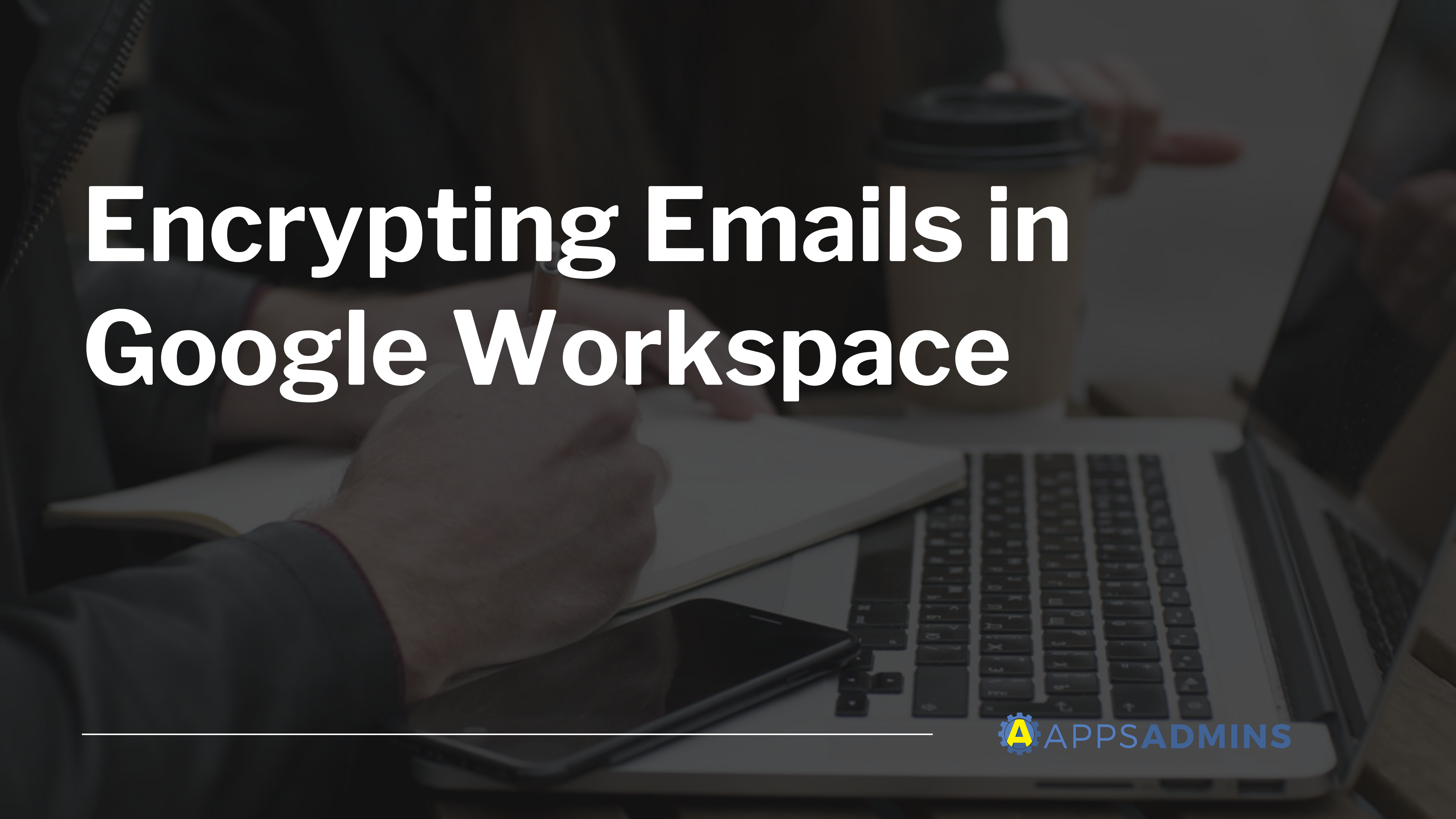G Suite Business Free for 30 Days
Sign up for a Free 30 Day Trial of G Suite Business and get Free Admin support from Google Certified Deployment Specialists. No Credit Card Required.


Your cybersecurity strategy can make or break your business. According to a survey from Enterprise Management Associates, 72% of enterprise data needs protection. As cyber attacks grow increasingly advanced, it's more important than ever for businesses to make sure that they have the right protection in place. So if you're ready to secure your business with G Suite here is your guide to Cloud Defense.
A major phishing attack that penetrates your business because of an infected email or a piece of malware can be catastrophic to any company. Not only could you end up losing valuable business data, but you may find that the irreparable damage to your reputation is a significant issue too.
The threats facing businesses aren't getting any less worrisome. By 2023, experts predict that data breaches will expose as many as 146 billion records. The good news is that there are things you can do to protect your organization and your employees from attack.
The first step? Deploying the right cloud productivity suite.
Why the Cloud is the Future of Security
There are many reasons why data criminals are becoming harder to avoid these days. First of all, while the creation of new technologies supports business innovation, it also opens new doors for cybercriminals too. Additionally, in today's agile world, old and outdated legacy systems are becoming increasingly difficult to protect.
Traditional solutions for security are hard to use, both for the professionals who need to manage and maintain them and for the business people who need to access them. According to EMA studies, complexity is 3 times more of an issue than cost when it comes to barriers in adoption of new tools for IT personnel. Even if your company had the budget to install new hardware security system each time a new threat was discovered, legacy protection strategies are too cumbersome for today's teams.
An on-premise patchwork of systems requires an excessive level of management. One slip up could make your business a target for all the attackers in your area. In a world where the tools we use are always changing and evolving, you need a security strategy that can develop with you. That means moving to the cloud.
Google is a business that started in the cloud and continues to run in the cloud today. This organization understands the security implications involved with running a business on cloud technology. Because G Suite enterprise services and Google's network run on the same infrastructure, you know you're getting a system that you can trust. After all, it's Google's security strategy that enables its professionals to innovate and accomplish new things every day.
Some of the ways that you can secure your business with G Suite on the cloud.
1. Protect your Emails with Gmail and Phishing Detection
Sometimes, the biggest threats to your business end up breaching your system through something as simple as opening a malicious email. When your employees rely on email to collaborate, it's difficult not to open links and click on files. Unfortunately, that's how phishing attacks start.
Gmail is designed to be one of the best solutions on the cloud for protecting your business against unexpected phishing issues. By applying machine learning strategies across over 1 billion users, Google has been able to learn everything there is to know about email attacks. That means that G Suite can always protect you against the latest threats in the marketplace.
Gmail comes with a wide range of security defenses built-in against polymorphic malware and ransomware. It blocks millions of emails capable of harming your organization and learns from new ransomware signals as time passes by. Additionally, if you're concerned about phishing attacks, you can also add "Early Phishing Detection" to your inboxes.
Early phishing detection uses machine learning to identify emails that carry a possible threat for your organization. By moving suspicious emails straight to a separate inbox, G Suite helps to protect against unwanted accidents.
2. Manage Password Strength
Aside from email issues, another way that your employees can accidentally open the door for attacks is with weak passwords. When today's users have so many different passwords to remember, it's tempting to simply use the same standard code for each account. Unfortunately, this gives criminals an easy way to access your data.
Fortunately, as a G Suite admin, you'll be able to control and track the password strength of everyone in your team. You can set minimum strength requirement levels, and even view the protection level of each password according to a graph on your admin console. If you're concerned that basic password protection isn't enough, then you can always adopt 2-step verification too.
Multi-factor authentication provides an extra layer of security for your users, by asking them to authenticate their passwords with a verification code. The code can be in the form of a voice call, a mobile app notification, or something else. Remember, before you implement and enforce 2-factor-authentication, make sure that everyone has your team has opted-in. Otherwise, your staff members could get locked out of their accounts. If anyone in your business doesn't need to use 2-step verification, consider placing them in an "exception" group.
3. Stop Dangerous Apps from Accessing Accounts
The chances are that your employees rely on some apps to support their productivity in the workplace. Some of these apps may have been approved by your team, while others may not be as secure as you'd like. Since simply asking your groups not to use certain tools is rarely successful, an alternative option may be to disable access to less secure apps for your users.
This way, if someone tries to access a G Suite account using an unsecure app, they'll receive an email telling them that someone tried to breach their account. Administrators can then monitor whether their users allow access to less secure apps through the Account Activity Reports section. These tools make it harder for teams to potentially put your business at risk through the use of "shadow IT" practices.
4. Manage Access to External Apps
There have been many incidents in which non-Google applications and dangerous tools have mimicked the appearance of an approved app to gain access to data. Someone might receive an email telling that their coworker has invited them to edit a document. However, when they open the record, it automatically begins downloading malware into your company's network.
The last thing you want to do in any business is accidentally whitelist dangerous programs. Fortunately, OAuth is a solution to help you manage which apps can access your content. Through OAuth whitelisting, you'll be able to select which apps in your network should be able to access user data, and which should be banned taking information from your website.
Once you've added each approved application to your business whitelist, the end-user will also have to decide whether or not to allow access to data. With only the most secure apps whitelisted, you can ensure that criminals won't simply trick your customers into handing over their data.
5. Be Careful with Google Group Configurations
Much of the G Suite productivity network is designed to give your teams the tools that they need to work together. To help encourage this teamwork, it's likely that you'll create a number of groups, each filled with users who have varying levels of access to different tools and systems. Unfortunately, Google Groups have been known to leak sensitive information in the past. According to research from Kenna Security, over 9,600 organizations accidentally had their Google Group setting set to public, and they were leaking data without their knowledge.
The problem here isn't with your G Suite strategy; it's with how you're managing your Group privacy settings. As a Google Admin, it's essential for you to keep an eye on the way that groups are configured throughout your team. You'll be able to quickly analyze and audit your domain's sharing permissions and the requirements for each group in the Admin Console. Make sure that any group that might be sharing sensitive information is set to private. This way, you ensure that no-one outside your organization can access your data.
Exploring the G Suite Security Center
Aside from the five tips above, there's also one particularly impressive way to upgrade your security strategy with G Suite. If you're signed up for the Enterprise edition of the productivity tool, then you'll also get access to G Suite's advanced "Security Center."
The Security Center is a solution within Google that's designed to provide further transparency to apps admins in search of a more secure workforce. You'll be able to use your center to see a clearer view of the state of your security, complete with access to your own security dashboard. The G Suite Security Center dashboard provides an inside look at all the existing security metrics from all of your G Suite services.
Essentially, it means that you can track everything that's happening in your business from a security standpoint in the same place. You'll be able to monitor everything from malware and spam, to external file sharing and more. There are even metrics available to define how effective your security strategy is. Some of the features you can find in the G Suite Security Center include:
- The Security Health Checkup system: This is where you can analyze the health and security of the email messages that didn't meet with your company's standards for authentication. You'll begin to learn which Drive files trigger problems with Data Loss Protection rules too. The Security Health Checkup system comes with a Quick Start guide, intended to recommend the best settings for business.
- The Alert Center: The alert center is one of the most recent additions to Google's security strategy. As the name might suggest, it provides a comprehensive view of all the alerts and notifications from across your G Suite tools. The list view comes with an array of columns, highlighting three specific alert segments. The initial alerts available are for Google operations, Google Phishing and Spam, and Mobile device management. The notifications that you receive will be categorized by their threat level.
- G Suite Investigate: The G Suite investigation tool was launched as an early adopter program in July 2018. However, today, it's generally available for any administrator or IT team to use. Primarily, the G Suite security investigation tool helps you to get a deeper insight into your security strategies and what's working for your business. According to Google, it will help administrators and analysts to triage, identify and fix security threats in their business. The Investigation feature supplements the existing capabilities of the Security Center, and your Alert Center.
Make Your Suite Secure with G Suite
In 2012, an FBI director named Robert Mueller said that there are only two kinds of companies in the digital world, the businesses that have already been breached, and the ones that are waiting to be hacked. Although it's fair to say that things have changed since 2012, the need for better security remains consistent. Google has millions of companies using G Suite every day, and it knows that there's a vast ecosystem out there relying on it for a secure experience.
It's not just the more prominent brands that need to worry either. According to Verizon, 61% of the data breach victims to report an issue in 2017 were companies with under 1,000 employees. Anyone can be the victim of a cyber-attack.
The good news for Google app Admins is that with the right G Suite strategy, you can take steps to protect and support your team. With the tips that we've covered above and a little help from Coolhead Tech, you'll be on your way to a more secure business in no time.
To find out more about what you can do to protect your company, reach out to us today!
.jpg?width=818&name=appsadmins-svg-rules-1%20(2).jpg)







